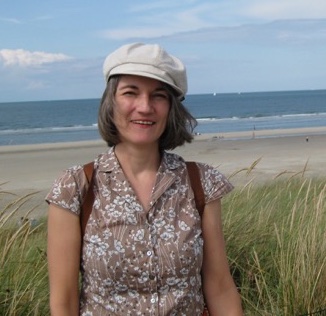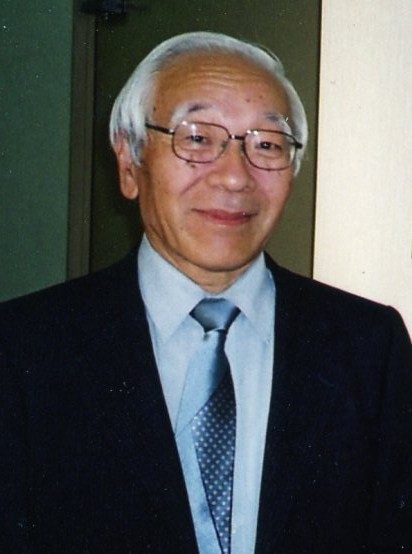
Susanne Miyata
Department of Medical Sciences
Aichi Shukotoku University
smiyata@asu.aasa.ac.jp
website

Masayuki Yokoyama
Professor Emeritus
University of Teacher Education, Fukuoka
yoko41@jcom.home.ne.jp

Yukino and her mother

|
Susanne Miyata Department of Medical Sciences Aichi Shukotoku University smiyata@asu.aasa.ac.jp website |

|
Masayuki Yokoyama Professor Emeritus University of Teacher Education, Fukuoka yoko41@jcom.home.ne.jp |

|
Yukino and her mother |
| Participants: | 1 |
| Type of Study: | longitudinal |
| Location: | Japan |
| Media type: | none |
| DOI: | doi:10.21415/T5T10V |
In accordance with TalkBank rules, any use of data from this corpus must be accompanied by at least one of the above references.
The Yokoyama-Corpus contains diary data collected by Masayuki Yokoyama. He observed his third-born daughter Yukino (Kiichan) from birth (1973, March, 29th) until the age of three, as she was growing up in Fukuoka. Her birth weight was 2,480g, and she was healthy throughout the observation. She started to walk at 1;1.21. She was a sunny and open child. She uttered her first word at 0;10.5 and her first 2-word sentences at 1;2.8. At 1;6 she obtained a developmental quotient of 156 (Enjoji Analytical Developmental Test, Keio University Press). At 2;0 her IQ score was measured as 120 (Tanaka/Binet Intelligence Test; Taken Publishing).
She lived with her family in Munakata (Fukuoka Prefecture). At the time of her birth, the family consisted of five persons: her father (31;8), her mother (28;2), her elder sister Fumino ("Miichan", 2;7) and her elder brother Yoshifumi ("Yoshikun", 1;5). Both parents spoke Standard Japanese and could not speak the local Fukuoka dialect (Hakata-ben). Notably, Kiichan started using dialectal expressions (mainly verb endings and final particles) as early as 1;9. Kiichan's father was raised in Sapporo and Asahikawa (Hokkaido) where he lived until the end of senior high school. At the time of Kiichan's birth he worked as associate professor of developmental psychology at a national university. Her mother was raised in Kobayashi (Miyazaki Prefecture),having graduated in English literature, she was teaching at English at a junior high school. After Fumino's birth she stopped teaching and concentrated on household work and child-care, but restarted to work as a part-time teacher at the local senior high school when Kiichan became two years old. While her mother was at work, Kiichan was taken care of at a nursery school.
The observation took place at Kiichan's home, a rental apartment on the first floor of a four-storied apartment building for university employees located on campus. The apartment consisted of a 9 mat (13.0 square meters) dining kitchen (refered to as "ima A"), two 6 mat (8.67 square meters) Japanese-style rooms (ima B and shosai), and a 4.5 mat (6.5 square meters) room (kodomobeya).
The corpus is based on handwritten records collected by her father and her mother (additionally tape recordings were taken at least 30 minutes daily, but not included into this corpus). The observation was performed daily, without time restriction. The observed utterances were put down on cards (13cm x 18cm) following the procedure described by Junya Noji (1973) and Lois Bloom (1970), who pointed out the importance of nonverbal and situational information for the grammatical interpretation of child utterances. All utterances are therefore provided with a comment describing the context and interpreting the child's utterance. Kiichan's spontaneous utterances including situation, actions and context, as well as her utterances or actions in reaction to utterances of her parents or siblings were recorded in as much detail as possible.
The observation started when Kiichan began to react to the surrounding speech at an age of 10 months, and lasted until her third birthday. At present the released data contains the files number 13 to 103, covering the age span between 1;1 and 3;0. The very first records (files number 1 to 12) will be released in the future. The current data set contains a total of 40,276 utterances, with 31,566 utterances by Kiichan, 3,296 and 3,923 utterances by her father and mother, respectively, as well as 1,468 utterances by other speakers.
The handwritten data were entered in CHAT format and provided with morpheme coding (JMOR07) by Susanne Miyata (Aichi Shukutoku University).